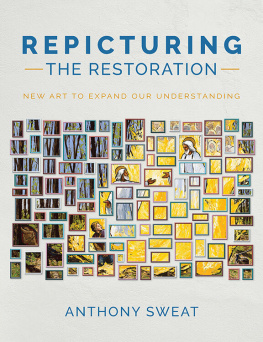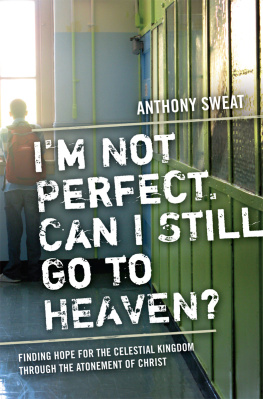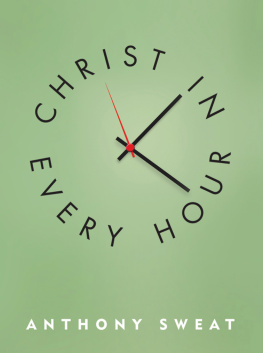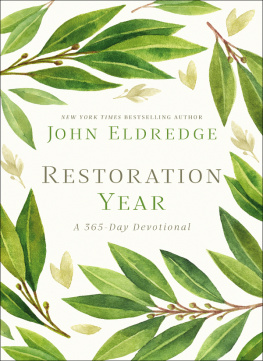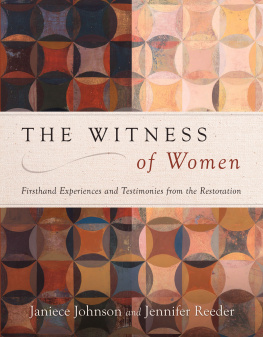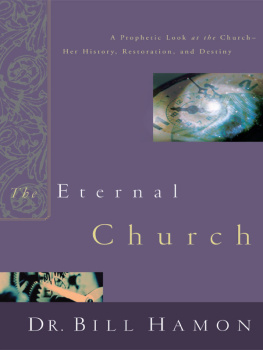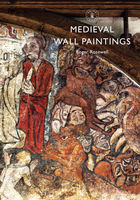Scan this QR code with your phone to download images from Repicturing the Restoration for home use or classroom teaching.
Art and text by Anthony Sweat
Published by the Religious Studies Center, Brigham Young University, Provo, Utah, in cooperation with Deseret Book Company, Salt Lake City, Utah.
Visit us at rsc.byu.edu.
2020 by Brigham Young University. All rights reserved.
Printed in the United States of America by Sheridan Books, Inc.
DESERET BOOK is a registered trademark of Deseret Book Company.
Visit us at DeseretBook.com.
Any uses of this material beyond those allowed by the exemptions in US copyright law, such as section 107, Fair Use, and section 108, Library Copying, require the written permission of the publisher, Religious Studies Center, 185 HGB, Brigham Young University, Provo, UT 84602. The views expressed herein are the responsibility of the authors and do not necessarily represent the position of Brigham Young University or the Religious Studies Center.
Cover and interior design by Emily V. Strong
Library of Congress Cataloging-in-Publication Data
Names: Sweat, Anthony, author, illustrator.
Title: Repicturing the Restoration: new art to expand our understanding / text and paintings by Anthony Sweat.
Description: 1st. | Provo, Utah : Religious Studies Center, Brigham Young University : Salt Lake City, Utah : Deseret Book Company, [2020] | Includes index. | Summary: Bringing together the authors artistic and academic training, this book offers twenty-five paintings of important events from the early Restoration that have either never been painted before or that have not had key elements depicted consistent with the historical record-- Provided by publisher.
Identifiers: LCCN 2020015877 | ISBN 9781944394981 (hardcover) | eISBN 978-1-64933-011-6 (eBook)
Subjects: LCSH: Church of Jesus Christ of Latter-day Saints--History--19th century--Art. | Mormon Church--History--19th century--Art. | LCGFT: Illustrated works.
Classification: LCC BX8638 .S94 2020 | DDC 289.309--dc23
LC record available at https://lccn.loc.gov/2020015877
Contents
Prologue
The Art of Belief
Painting contains a divine force which not only makes absent men present... but moreover makes the dead seem almost alive.
leon alberti, on painting
M y first prophets were painters.
The apostles who originally taught me the gospel were artists like Arnold Friberg, Minerva Teichert, Harry Anderson, Tom Lovell, Gary Smith, Del Parson, Greg Olsen, Liz Lemon Swindle, C. C. A. Christensen, James Tissot, Carl Bloch, Gustave Dor, and Rembrandt van Rijn, to name a few.
When I was young and the monthly Ensign magazine would arrive in our family mailbox, I would excitedly sit down with it on our flowered 1980s sofa, not to read the articles but to gaze at the art. The images were what captivated and instructed me. I visualized Josephs vision because of Parsons painting. I comprehended that Christ was crucified because of Andersons art. I empathized with the exodus from Nauvoo because of Christensens canvas. These images embedded themselves in my mind and heart unlike any sermon or written word I can recall from my formative years.
Art has the power to do that, especially religious art, which is why Christianity has long deployed visual imagery for its purposes. In his classic 1897 work The Ministry of Art , Frank Bristol wrote:
Art has glorified Christianity. It has set forth her doctrines, portrayed her saints, and even her very God and Savior. Limited only by the necessary restrictions of her powers, art has been a teacher of things divine. It has robed religion in loveliness, and crowned her white brow with jewels of beauty. It has reared the noblest structures that adorn the earth to her honor and service. Not to science, not to letters, not to philosophy, not to liberty, not to nature, not to art itself, but to religion has art dedicated its most glorious achievements, whether in painting, in sculpture, or in architecture.
Although visual art has long been a major force in Christianity, it took about one hundred years for the restored Church of Jesus Christ of Latter-day Saints to regularly use artistic imagery in its institutional publications to perpetuate its founding events and doctrines. From the Churchs organization in 1830 until 1900, there were fewer than three dozen images dealing with Church history or doctrine published in tens of thousands of pages of Church periodicals. Only in the mid-twentieth century did the Church begin to consistently publish artistic images in its printed pages. Those born after the turn of the twentieth century are the first Latter-day Saints who have been raised on an abundant visual Church curriculum.
It is highly likely that the religious images published by the Church since that time have impacted you also, teaching you the gospel visually, perhaps almost subconsciously. If I ask you to imagine Abinadi and King Noah, I can probably guess the scene that appears in your mind: Abinadi as a soft, doughy-faced youth, and King Noah holding a red rooster, right? No! You likely pictured Abinadi as an old man, shirtless, and rippled with muscles most anyone would envy. King Noah is overweight, sits on a throne, and has pet leopards. Two of them to be exact. How did I know?
You can thank Arnold Friberg for that. He created masterfully epic paintings in the mid-1950s that have since been redistributed millions of times in missionary copies of the Book of Mormon and in Church magazines. Fribergs paintings have almost become visual canon. So much so that if I asked you to list a dozen Book of Mormon stories off the top of your head in thirty seconds, your list would likely include many of the twelve that Friberg created: the two thousand stripling warriors, Ammon cutting off marauders arms, the brother of Jared with the shining stones. Those may not be the most pivotal Book of Mormon events, but they are among the most dramatically portrayed. I have tried this experiment with people, and they rarely list stories such as Alma and Amuleks prison walls tumbling down (see Alma 14), Teancum killing Ammoron with a javelin (see Alma 62), or Nephi and Lehi being encircled by fire and conversing with angels (see Helaman 5). Something tells me that if Friberg had epically depicted those scenes, we might know them as well as we know Samuel the Lamanite on the wall.

Repicturing the Restoration
This leads me to the purpose of the present project, Repicturing the Restoration . I am a religion professor for the Department of Church History and Doctrine at Brigham Young University. I teach about Joseph Smith and the early Restoration as my profession. My PhD is in curriculum and instruction applied to religious education. I think and research and write about how people learn religiously and am driven by the quest to help Latter-day Saints have broad, deep, mature, abiding, and converting faith, and to learn what best helps in that process. I am convinced that visual art is one of the most potent tools. This is because, as art historian Herman Du Toit has written, art has the capacity to create new meaning in the mind of the viewer, often by nondiscursive means. As I have taught the Restoration and researched paintings that were associated with it, however, I have noticed that our Latter-day Saint imagery is sometimes lacking. Not in artistic quality, but sometimes in subject breadth, depth, historicity, and complexity. We have primarily shown the same Church history images over and over: the First Vision, Joseph with Moroni, Joseph and Oliver with John the Baptist or Peter, James, and John, and images of pioneers. It is for good reason that these scenes are repeatedly painted, since they are central to our founding Restoration narrative. But important and instructive Latter-day Saint history is often more diverse than these handful of events.

